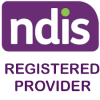FAQ
Frequently Asked Questions
An oxygen concentrator is a device that delivers concentrated oxygen to individuals who have a condition that causes low oxygen levels in their blood. They work by drawing in air from the environment, separating oxygen, and expelling other gases to provide the user with a steady supply of concentrated oxygen.
Home oxygen concentrators are stationary devices primarily used in homes or healthcare facilities. They provide a continuous flow of oxygen and are designed for long-term, 24/7 use. On the other hand, portable oxygen concentrators are smaller, lightweight, and battery-operated, designed to be carried around, providing the user with freedom and flexibility to maintain an active lifestyle.
Continuous flow oxygen provides a constant stream of oxygen, irrespective of the user’s breathing pattern. In contrast, pulse dose oxygen (also known as on-demand oxygen) delivers oxygen only when the user inhales, making it more efficient and longer-lasting, especially for portable units.
Yes, most airlines allow passengers to bring portable oxygen concentrators on board. However, each airline has its own policy, so it’s essential to check with them beforehand. For instance, Qantas provides detailed instructions for those needing to travel with oxygen.
Selecting the right oxygen concentrator involves considering several factors such as your medical condition, lifestyle, whether you need a continuous or pulse flow, and how often you’ll be using the concentrator. At Oxygen West, our highly trained staff work with you, your physicians, and care teams to help determine the most suitable solution for you.
We proudly partner with industry leaders CAIRE Australia and Philips Healthcare to offer a curated selection of reliable oxygen concentrators that cater to a wide range of needs and lifestyles.
Yes, oxygen concentrators are considered medical devices and require a prescription from a healthcare professional. The prescription will indicate your required oxygen flow rate and whether you need continuous or pulse flow.
Maintenance for oxygen concentrators typically involves regular cleaning and replacing of filters as per the manufacturer’s instructions. Both Caire and Philips provide detailed user manuals with their products for proper maintenance guidance.
Yes, most models allow you to use your oxygen concentrator while it’s charging. However, this might vary depending on the specific model, so it’s best to refer to the product’s user manual.
Battery life varies greatly based on the specific model of the concentrator and the flow setting. Typically, batteries can last anywhere from a few hours to a whole day.
If the power goes out, your home oxygen concentrator will not be able to operate. It’s essential to have a plan for such situations to ensure you continue to receive oxygen. Here are a few steps:
- Backup oxygen supply: Always keep a backup oxygen supply, such as a portable oxygen concentrator or oxygen cylinders. If the power goes out, switch to your backup supply.
- Emergency Plan: Create an emergency plan with your healthcare provider and family members. This plan should detail what steps you’ll take and who you’ll contact in case of a power outage. Share this plan with everyone in your household.
- Emergency Contacts: Keep a list of emergency contact numbers, including your healthcare provider, Oxygen West support team, and local emergency services.
- Power Company Notification: Notify your power company that you are dependent on oxygen therapy. They may prioritize your home during power restoration efforts or provide advance warning of planned outages.
Remember, we are here at Oxygen West to assist with any questions or concerns you may have about oxygen therapy. Our commitment is to ensure you are supported and confident in your oxygen concentrator purchase and use. Reach out to us anytime you need our expertise.
Yes, you can travel with oxygen, although there are a few considerations to keep in mind:
- Portable Oxygen Concentrators (POCs): These are designed for mobility and many are FAA-approved for air travel. Check with your airline to ensure your POC is allowed onboard.
- Travel Plans: Inform your airline, travel providers, and accommodations about your oxygen needs to ensure they can accommodate you. Always carry a copy of your oxygen prescription when traveling.
- Backup Oxygen Supply: Carry an extra supply of oxygen for emergencies or delays during travel.
- Battery Life: Make sure your POC’s battery life is sufficient for the duration of your travel, including transportation time to and from the airport. It’s advisable to carry extra batteries.
- Oxygen West Support: Contact the Oxygen West team for travel advice tailored to your specific needs and for help arranging oxygen supplies at your destination if needed.
You can find specific information from Quantas and Jetstar on our resources page in the main menu.
Note: Always consult with your Respiratory Physician before making travel plans to ensure you are fit to travel and that you have sufficient oxygen for the duration of your trip.
The above information serves as a guide and does not replace professional medical advice. Always consult with a healthcare professional for appropriate medical guidance.


